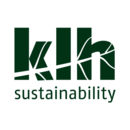Using BREEAM to assess the sustainable sourcing and use of aggregates
Contents |
[edit] Introduction
In October 2017, the draft of the eagerly anticipated BREEAM UK New Construction (NC) 2018 was launched for consultation. Whilst there are many changes that will hopefully continue to improve the way we promote and assess the sustainability of new developments, some of the most interesting relate to assessment issue WST 02 in the ‘Waste’ category.
The new WST 02 is entitled ‘Use of recycled and sustainably sourced aggregates’, branching out from the previous topic of simply ‘Recycled aggregates’. Over the last year, KLH Sustainability, on behalf of The Crown Estate conducted extensive research into the UK aggregate industry and consulted with key members about a revised methodology for assessing aggregate use in construction. Out of this work, a new criteria and assessment methodology were proposed to BRE for the WST 02 assessment issue. The proposed criteria have now been published in the draft 2018 manual.
[edit] Why does it matter and why change the credit?
Aggregates are low value, high bulk materials and are vital in nearly every construction project. KLH Sustainability have previously written about the availability of recycled and secondary aggregates, and the potential consequences of trying to drive recycled and secondary aggregates up the value chain. An alternative approach to the assessment of sustainable sourcing and use of aggregates has been introduced, highlighting how aggregates should be evaluated holistically.
[edit] New proposal for WST 02
The new methodology aims to recognise and minimise social and environmental impacts of aggregate selection, sourcing and use. Three key assessment criteria, deemed significant for the aggregate industry, are used:
- local availability of aggregates – this uses the regional Abiotic Depletion Potential (ADP) of the aggregate type depending on the region from which it is sourced (see an explanation of ADP here);
- social cost of transportation – a monetary value is determined based on the cost of externalities associated with freight transport, such as accidents, congestion, and noise. Different modes of transport and types of roads have different social costs;
- carbon footprint – carbon emissions are calculated based on the aggregate type and the CO2e emissions from the mode of transport selected and the travel distance.
The assessment is based on the points achieved per aggregate source, with points awarded in each of the three categories. Using the tonnes of aggregate per source, a final weighted average for the project is calculated, giving a project Sustainable Aggregate Points score.
There is an easy-to-use tool for use with the BREEAM credit that does most of the work for you.
[edit] Going forward
It is hoped that this new, broader method will encourage project teams to recognise the holistic impacts of aggregates and engage with the industry to identify and test alternative sources, as well as encourage the maximum reuse of aggregates obtained from site-won material. As noted in the draft BREEAM UK NC 2018 manual, this new methodology recognises that “primary aggregates can still be considered a sustainable option, where locally sourced, sustainably transported and from a region where that aggregate type is abundant.”
The formal BRE consultation closed on Friday 3rd November 2017.
[edit] Related articles on Designing Buildings Wiki
Featured articles and news
Professional practical experience for Architects in training
The long process to transform the nature of education and professional practical experience in the Architecture profession following recent reports.
A people-first approach to retrofit
Moving away from the destructive paradigm of fabric-first.
International Electrician Day, 10 June 2025
Celebrating the role of electrical engineers from André-Marie Amperè, today and for the future.
New guide for clients launched at Houses of Parliament
'There has never been a more important time for clients to step up and ...ask the right questions'
The impact of recycled slate tiles
Innovation across the decades.
EPC changes for existing buildings
Changes and their context as the new RdSAP methodology comes into use from 15 June.
Skills England publishes Sector skills needs assessments
Priority areas relating to the built environment highlighted and described in brief.
BSRIA HVAC Market Watch - May 2025 Edition
Heat Pump Market Outlook: Policy, Performance & Refrigerant Trends for 2025–2028.
Committing to EDI in construction with CIOB
Built Environment professional bodies deepen commitment to EDI with two new signatories: CIAT and CICES.
Government Grenfell progress report at a glance
Line by line recomendation overview, with links to more details.
An engaging and lively review of his professional life.
Sustainable heating for listed buildings
A problem that needs to be approached intelligently.
50th Golden anniversary ECA Edmundson apprentice award
Deadline for entries has been extended to Friday 27 June, so don't miss out!
CIAT at the London Festival of Architecture
Designing for Everyone: Breaking Barriers in Inclusive Architecture.
Mixed reactions to apprenticeship and skills reform 2025
A 'welcome shift' for some and a 'backwards step' for others.






















